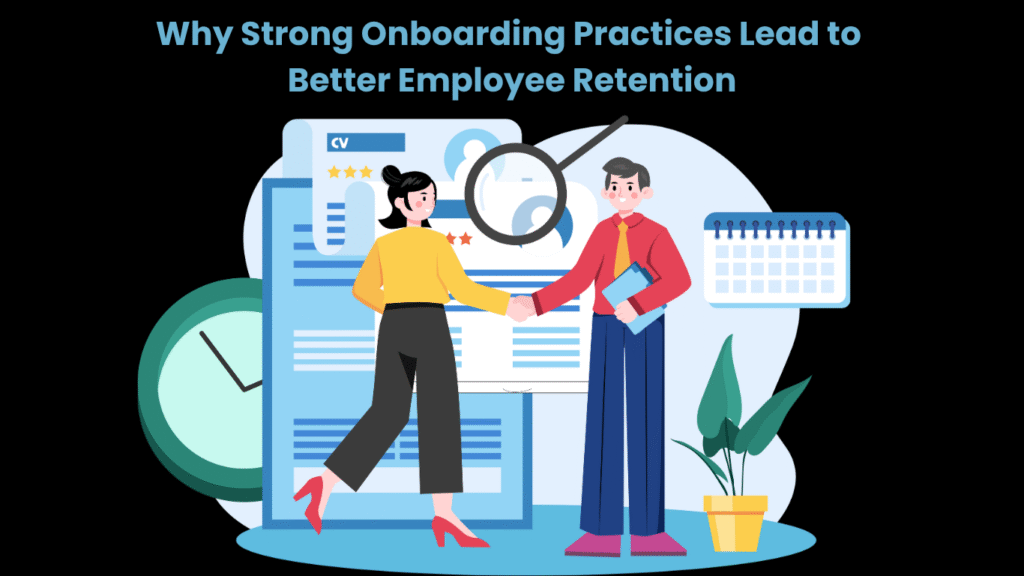One of the responsibilities of a modern organization is holding on to good employees. Big turnover means operations are lost, and there are also costs. A successful onboarding process not only assists new hires in adjusting but also ensures they are more likely to stay for the long term. Examining how structured onboarding strategies lead to higher retention would be a good finding for companies that need a steady workforce to succeed and expand.
First Impressions Matter
When new hires join an organization, first impressions shape how they see the workplace. Structured onboarding offers new hires an idea of how your workplace runs. Simple touches, like using a conference room booking software for training sessions, can make those first days more organized and welcoming. An organization creates a sense of belonging by communicating and sharing employee experience through company culture, mission, and values. That initial link between onboarding and retention can be vital as many workers choose to keep or leave in the first few months.
Establishing Expectations
Any new employee needs to be crystal clear about what their role and expectations will be. During onboarding, managers can clarify expectations. People are more likely to feel invested in their work when they understand how it contributes to the organization as a whole. This gives employees a sense of purpose, which allows them to enjoy their jobs better and decreases the likelihood they are going to look for openings elsewhere.
Training and Up-skilling Opportunities
Training programs are also a part of effective onboarding. Such sessions prepare newcomers for their respective roles by breaking them down into skills they need to perform their duties, thereby increasing confidence and competence. For hybrid or distributed teams, designing an effective remote onboarding process ensures that new hires receive the same clarity and support as in-office employees. Employees who seek continuous development are suitable for organizations that care about employee growth. Providing regular training opportunities is one way to encourage staff to stay loyal to the company and safe in the knowledge that their professional development is of high value. Incorporating English learning programs into onboarding and ongoing training can further support employee development, especially in global or distributed teams, by improving communication skills, boosting confidence, and enabling more effective collaboration across diverse work environments.
Building Relationships
Connecting with co-workers is integral to getting settled into a new company. One way it helps is by introducing new hires to team members and key stakeholders through onboarding. The bonds can also be supplemented by social activities or team-building sessions. Positive work relationships facilitate a supportive work environment and contribute to increased job satisfaction and loyalty.
Feedback and Support
It is also essential for new employees to have continuous feedback while they are onboarding. Allow feedback and direction that help a person see things in which they need to improve but also where they have done well. Supervisors who check in regularly provide support and show that they care and are listening. Retaining employees is thus made easier with this kind of support system where people feel encouraged and valued.
Lowering Stress and Anxiety Levels
The prospect of transitioning into a new role can be scary. Onboarding programs that tackle concerns and issues that arise frequently help reduce anxiety. Organizations provide new hires with the right resources and information to help them be successful and address challenges as they arise. When you feel comfortable and encouraged, less pressure is put on your shoulders, and you can feel happier in your job.
Promoting Open and Honest Dialogues
Having an open communication culture enables employees to speak up regarding any worries and suggestions. It’s important to set this norm during onboarding, allowing feedback from team members of every level of expertise. If they feel heard, they will probably stick with the organization. Just talking through the ideas helps bring innovation out and helps build team cohesiveness.
Measuring Success
Measuring the success of onboarding programs is necessary to continually improve. It helps organizations gain insights into new hires’ experiences and improvement areas. Retention rates and employee satisfaction surveys tell you how successful those onboarding programs have been. A data-driven approach enables companies to iterate practices so that they can address changing requirements.
Read More: The 5 Best Cold Email Tools for Lead Generation Agencies
Conclusion
Effective onboarding has a lasting impact on employee turnover and retention. First impressions matter, as organizations can provide clarity of expectation, but with a view of nurturing instead of just focusing on results, organizations can be assured of a willing workforce. Not only does the organization benefit from well-structured onboarding programs, but they also help the company succeed as a whole. Scalability is the most important aspect to consider in developing an effective business, but businesses need to implement it wisely to build a workplace where people know they matter and contribute their best.




